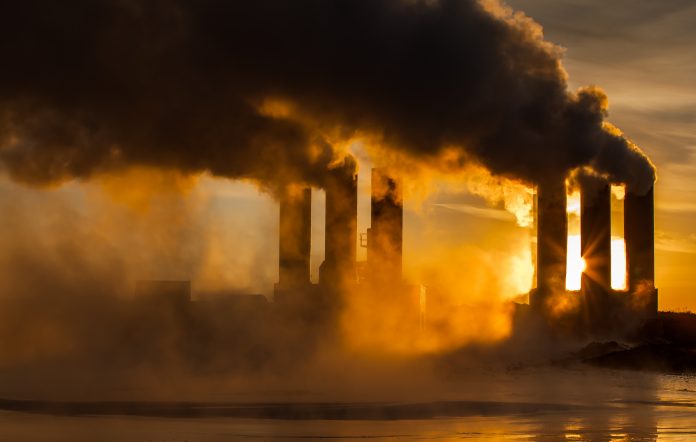Focus on geothermal resources is shifting and direct use of geothermal is receiving more and more attention
Geothermal resources are stored in the earth’s crust and characterized by various parameters such as temperature, pressure, permeability and composition. They are generally classified into low, medium and high-temperature resources with reference to their temperature.
Although geothermal energy is one of the oldest forms of energy used by humans, with the use of hot springs and natural pools for bathing, warmth and cooking, its use for power generation started just over a century ago in Italy. High-temperature fields have until recently been the main focus for development of power production projects. There is, however, a recent shift in focus, with direct use of geothermal receiving more attention.
Direct use of geothermal?
The direct use of geothermal for space heating is a well-known direct application of geothermal. Iceland has successfully achieved part of its energy transition several decades ago, with more than 90% households today using geothermal for domestic hot water and space heating. In China, Sinopec Green Energy Geothermal Development Co., Ltd. has developed various geothermal district heating systems since 2006. In 2022, the company supplied heat to over 2 million customers. Verkís, as a designer and consulting engineer company, has proudly contributed to the development of geothermal district heating in Iceland and China.
But heat can be useful besides just space heating and it turns out that geothermal can be used in many other applications as well.
Decarbonation and energy independence of the industrial sector
The potential for utilization of geothermal in various industrial processes remains a less well-known aspect. As a matter of fact, many industrial applications require heat in their processes at temperatures below 150°C. A study conducted in 2005, Ecoheatcool, indicated that about 30% of the total industrial heat demand in Europe required temperatures below 100°C and 57% at temperatures below 400°C. (1) It is also estimated that the industrial sector accounts for about 25% of the EU28 final energy demand and that 60% of this demand is for process heating.(2)
In the context of energy crisis, resorting to local renewable sources of energy for industrial processes is critical and geothermal is an interesting solution. In addition to being a local source of energy, geothermal can contribute to the decarbonisation of the society, a hot topic in societies seeking ways to limit global warming to well below 2°C, preferably 1,5°C, compared to pre-industrial levels.

Availability of low and medium temperature geothermal resources
Geothermal resources are more hidden and less known than renewable sources of energy such as sun or wind. High and medium temperature, suitable for electricity production, is usually found close to tectonically active regions. On the other hand, lower temperature can be found in various geological setups all around the world and is indeed rather frequent.
Recent initiative, such as the Heat Roadmap Europe has interestingly mapped both heat demand and potential sources of renewable energy, striving to highlight opportunities for shifting to local renewable sources of energy as illustrated in figure 1, showing areas with potential hydrothermal resources (in green), where temperature below 2.000 m is greater than 90°C ( in dark pink), or where temperature is greater than 50°C at 1.000 m (light pink).
Multiple and integrated direct use of geothermal
Industrial applications encompass a rather wide range of industrial activities requiring fluid at low to medium temperature for instance to preheat, wash, evaporate, distillate or dry as well as for refrigeration via absorption heat pumps. They may also be used to produce salt and other chemicals.
Verkís approaches each geothermal project as a unique project where solutions can be found to optimize the utilization of the resource and harness it in a sustainable manner. An example of this way of thinking can be found in the Westfjords in Iceland where geothermal resources at 115°C are used to dry seaweed and produce milled kelp at the Thorverk factory. After the drying process, the 75°C geothermal fluid is used at the Nordursalt factory nearby. This water, together with 115°C water from a geothermal well, is used to boil the sea into brine and then evaporate the fluid in a concentrated salt brine, for producing flake salt.
A boiling tank and condenser are used to boil the sea and let the water evaporate at 50°C, at sub-atmospheric pressure, which is maintained by the injection of cold sea water into the steam in the separator standing by the plant. The salt originates from the sea. The sea is boiled in the boiling tank with titanium tubes with 70-80°C water on the inside. Low pressure superheated sea water is placed in contact with the titanium tube, not directly with the geothermal fluid.
Hot water from the boiling tank is used for drying the concentrated salt brine, producing salt flakes. Brine is dried in salt pans and the salt is finally dried in the drying chamber, from which the salt passes into the packing containers. The energy that drives the processing plant is thus obtained almost entirely from wastewater that was unused until the salt factory was taken into operation, and partly from 115°C geothermal water for final evaporation. Electricity is thus not an energy source for the production process but only used to power pumps, the air blower for ventilation, wrapping machine and general use in the factory building.

A few words in conclusion
The potential value of geothermal resources for direct industrial use is still underestimated and can be achieved in a technically efficient and economically feasible way. Considering the huge potential for industrial applications requiring heat below 120°C, industrial application should systematically be investigated when scoping potential exploitation activities for a given geothermal field or industries should start to investigate if geothermal resources could be available near their production site.
References
1. https://www.aee-intec.at/0uploads/dateien561.pdf
2. https://www.trust-ee.eu/discovery/process-heating
3. https://heatroadmap.eu/peta4/

This work is licensed under Creative Commons Attribution-NonCommercial-NoDerivatives 4.0 International.











